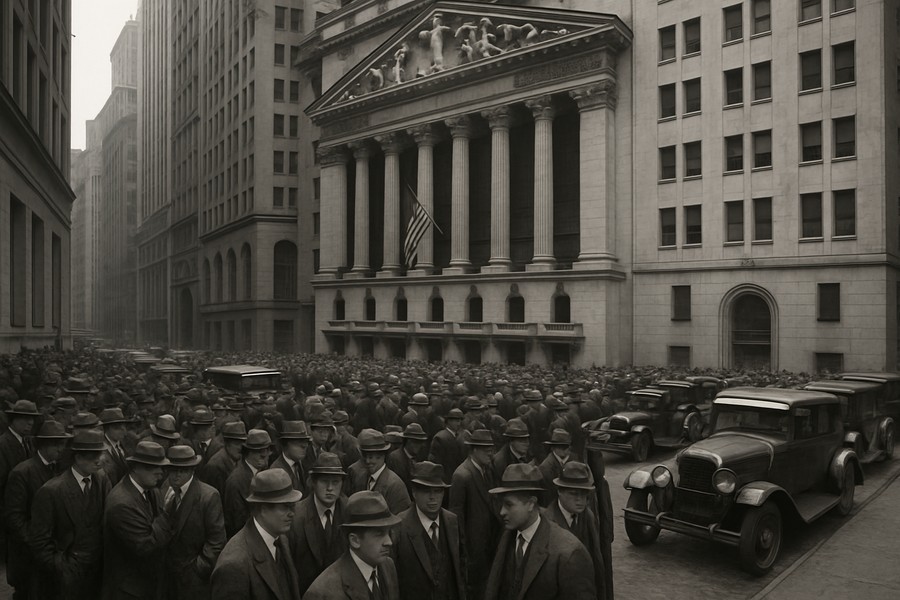
Reflections on the Catastrophic Financial Meltdown of 1929
Imagine a time when the world's largest financial center was thrown into a state of panic. A time when the stock market, built on shaky credit and rampant speculation, succumbed to a series of catastrophic falls. This was the reality in 1929, when the infamous Black Thursday sent shockwaves across the nation and the globe.
The Unfolding of the Financial Disaster
The tale of the 1929 financial meltdown is both fascinating and deeply unsettling. As a result of reckless speculation and unchecked credit, the stock market experienced a series of falls, culminating in the infamous Black Thursday on October 24. As one observer put it, this was a day characterized by "disorder, fright, and confusion".
Alongside rising unemployment and protectionist tariffs, this crash was a clear indicator of a looming global depression. And yet, despite the magnitude of this crisis, many people today know little about the specifics of what transpired.
Bringing History to Life
Diving into the depths of this tumultuous period in financial history, one discovers a story packed with human drama. As with most significant events, the 1929 crash wasn't just about abstract systems and structures. Rather, it revolved around individuals - their motivations, their decisions, their mistakes. It's this human perspective that makes the story so compelling.
For example, accounts of White House discussions with President Herbert Hoover, and the experiences of key players like Thomas Lamont, a partner at a major bank, offer a glimpse into the personal and political dimensions of the crisis.
Lessons from the Past
As we look back on this pivotal moment in history, it's clear that the past continues to resonate with our present. For instance, the issue of tariffs, which was a significant factor in the 1929 crash, is still a contentious topic today.
However, it's important to approach historical parallels with caution. While the past can offer valuable insights, it's essential to appreciate that each era has its unique challenges and circumstances.
The People Behind the Crisis
One of the most intriguing aspects of the 1929 crash is the array of characters involved. These include figures like Charlie Mitchell, the CEO of a major bank, who was later brought before Congress on tax charges, and Carter Glass, a senator who pushed for reforms to protect everyday Americans from Wall Street excess.
Another key player was John Raskob, an executive at two major companies, who also chaired a prominent political committee. These individuals weren't just faceless participants in a financial system. They were real people, with their own motivations and ambitions, and their actions had profound consequences.
Technology and the Market
It's also fascinating to consider the role of technology in this historical drama. In the 1920s, the tools of the trade were analog telephones, which have since been replaced by computers. However, the fundamental aim remains the same: to master the fast-paced, ever-changing world of the financial markets.
Understanding the Past, Informing the Future
As we reflect on the events of 1929, it's clear that this financial crisis has much to teach us. From the dangers of unchecked credit and speculation to the importance of robust financial regulation, the lessons of the past remain relevant today.
Indeed, as we face our own financial challenges, we would do well to remember the human drama that lies at the heart of these complex systems. After all, it's individuals - with their hopes, fears, and decisions - who ultimately shape the course of financial history.
